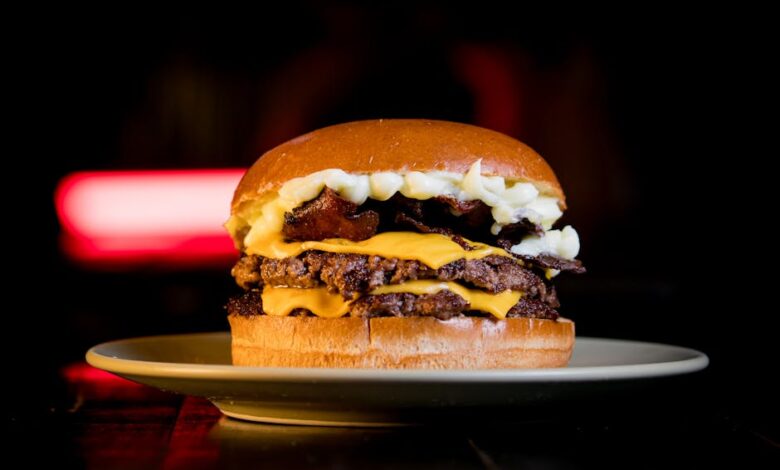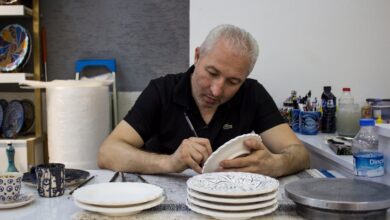Decoding Our Blueprint: The Double-Edged Sword of Embryo Prediction

The human body. It’s our oldest companion, the vessel through which we experience the world, a marvel of biological engineering refined over millennia. Yet, for all its intricate perfection, we’ve rarely been content to leave it entirely untouched. From ancient remedies to modern medicine, our drive to understand, heal, and ultimately, improve ourselves has been an enduring human constant. Now, however, we stand at the precipice of something far more profound than incremental improvements. The lines between what’s naturally given and what’s scientifically possible are blurring at an unprecedented rate.
This isn’t just about longer lifespans or better health; it’s about fundamentally redefining what it means to be human. Recently, I had the chance to dive into MIT Technology Review’s latest issue, aptly titled “The Body Issue,” and it left me with a buzzing blend of excitement and thoughtful contemplation. It’s a deep exploration into how scientific and technological tinkering is poised to reshape our physical selves in the years ahead, challenging our very notions of identity, destiny, and even morality. Let’s unpack some of the fascinating, and at times unsettling, insights this groundbreaking issue brings to light.
Decoding Our Blueprint: The Double-Edged Sword of Embryo Prediction
Imagine a future where a simple test could predict not just the likelihood of inherited diseases, but also a person’s aesthetic traits, their potential intelligence, or even their moral character, all while they’re still an embryo. It sounds like science fiction, a scene pulled straight from a dystopian novel, doesn’t it? Yet, as “The Body Issue” reveals, a new field of science is claiming to be able to do precisely this. The allure, frankly, is immense. Who wouldn’t want to give their child the best possible start, to mitigate risks before they even manifest?
On the surface, this could herald an era of unparalleled precision medicine, potentially eradicating debilitating conditions or enhancing cognitive functions in ways we can only dream of today. The promise of a healthier, more capable populace is a powerful motivator. We’ve always strived for betterment, and this feels like the ultimate expression of that aspiration. But this scientific leap carries with it an immense weight of ethical complexity, pushing us into uncharted moral territory that makes me pause and reflect deeply.
The Ethical Tightrope Walk of Pre-Emptive Design
Is this truly the next step in human evolution, guiding us towards a more robust and intelligent species? Or is it something far more dangerous, an opening of Pandora’s Box that could lead to unforeseen consequences? The discussion immediately veers into the realm of “designer babies,” raising uncomfortable questions about genetic inequality and societal stratification. If certain traits can be selected for, what does that mean for those who don’t have access to such technologies, or those who simply choose not to engage with them?
Moreover, what constitutes “optimal”? Who decides which aesthetic traits are desirable, or what level of intelligence is “enough”? The very idea of predicting and potentially influencing moral character is particularly chilling, suggesting a level of biological determinism that flies in the face of free will and personal growth. It prompts us to confront not just what we *can* do, but what we *should* do, and where the boundaries of human intervention truly lie. This isn’t just about tweaking genes; it’s about touching the essence of what makes each of us unique, before we even have a chance to breathe.
The Elusive Fountain of Youth: Can We Really Reverse the Clock?
Few quests have captivated humanity as profoundly as the search for immortality, or at least, for a way to defy the inexorable march of time. Aging, after all, is the ultimate leveler, affecting every single one of us. “The Body Issue” delves into this timeless pursuit by exploring the exciting advances in understanding why we age and, more intriguingly, whether we could ever reverse it. This isn’t just wishful thinking anymore; it’s a rapidly developing field of scientific inquiry driven by sophisticated tools like “aging clocks.”
These biological clocks, embedded within our very cells, measure our physiological age, which can sometimes differ significantly from our chronological age. By understanding the intricate mechanisms these clocks represent – the telomere shortening, epigenetic changes, and cellular senescence – scientists are gaining unprecedented insights into the aging process itself. It’s like finally getting a detailed blueprint of the machinery that causes wear and tear over time. And with that understanding comes the tantalizing possibility of intervention.
The potential implications are staggering. Imagine not just extending lifespan, but extending “healthspan”—the period of life spent in good health, free from age-related diseases. This isn’t just about vanity; it’s about reducing the burden of conditions like Alzheimer’s, heart disease, and various cancers. The concept of reversing aging cells or tissues, or even entire organisms, once confined to mythological tales, is now a serious area of research. It makes you wonder what a world would look like where a significant portion of the population lives for centuries, healthy and vibrant. It’s a vision that promises immense benefits, but also raises complex societal questions about resources, generational dynamics, and the very structure of life as we know it.
Reimagining Life: Stem Cells and the Architecting of Organisms
Stepping beyond the realm of merely modifying existing life, the magazine introduces us to the pioneering work of stem-cell scientist Jacob Hanna. His research takes a bold, almost audacious, approach: instead of relying on biology’s tried-and-true recipe for development, he’s coaxing the beginnings of animal bodies directly from stem cells. This isn’t about growing individual organs in a petri dish – though that itself is a remarkable feat – but about generating rudimentary organisms, complex enough to spark both scientific wonder and profound ethical debate.
This work represents a fundamental shift in our understanding and manipulation of life itself. The ability to guide unspecialized cells to form intricate structures that mimic early developmental stages opens up incredible avenues for research. Think of modeling human diseases in ways previously impossible, understanding developmental disorders, or even, in a distant future, perhaps growing complex tissues or organs for transplantation that perfectly match a patient’s needs. The potential to alleviate suffering and advance medical science is truly immense, pushing the boundaries of regenerative medicine into entirely new territory.
But with such immense power comes an equally immense responsibility, and the inevitable question that echoes through every groundbreaking scientific advance: “Should he?” When we begin to architect the beginnings of animal bodies from scratch, what are the moral implications? Where do we draw the line between a cellular aggregate and a living organism? The debates surrounding consciousness, sentience, and the sanctity of life become critically important as we move further down this path. It forces us to confront our definitions of life and what rights, if any, nascent biological constructs possess. This work isn’t just about scientific methodology; it’s about philosophy, ethics, and our place as creators in the biological realm.
The Body’s Own Memory: A Natural Counterpoint
Amidst all this high-tech intervention, “The Body Issue” also reminds us of the body’s own intrinsic wisdom with Bonnie Tsui’s piece on exercise memory. It’s a fascinating insight: the more we move, the more our muscle cells begin to make a memory of that exercise. This isn’t just about building strength or endurance; it’s about a deep, cellular-level adaptation that allows us to bounce back, to regain fitness more quickly after a break. It’s a beautiful testament to the body’s innate capacity for learning, adaptation, and resilience.
This biological memory serves as a wonderful counterpoint to the engineered solutions. While we push the boundaries of what technology can do *to* and *for* our bodies, it’s worth remembering that our bodies are already incredibly sophisticated machines with their own amazing capabilities. There’s a quiet brilliance in how our systems remember and optimize, a natural biological “upgrade” that happens simply through interaction with the world. It’s a reminder that even as we look to the future, there’s immense complexity and wonder already residing within us, waiting to be better understood and appreciated.
The Future Is Now: Navigating Our Evolving Selves
The insights from “The Body Issue” are a powerful reminder that the future of the human body isn’t some distant, abstract concept; it’s being shaped right now, in labs and research centers across the globe. We are entering an era where our biological destiny is increasingly becoming a matter of choice, not just chance. From predicting traits in embryos to reversing the effects of aging, and even architecting new biological forms from stem cells, the scientific advancements are breathtaking, promising a radical transformation of the human experience.
But as with any profound shift, these innovations come with a complex web of ethical, societal, and philosophical questions. What kind of humans do we want to become? What values will guide our choices when we have the power to redesign ourselves? How do we ensure these technologies benefit all of humanity, rather than deepening existing inequalities? The conversation is no longer theoretical; it’s urgent and profoundly personal. The human body, in all its vulnerability and resilience, remains our most precious possession, and its future demands our most careful and considered stewardship. As we venture into this exciting, yet uncertain, new frontier, our humanity will be defined not just by what we create, but by the wisdom with which we wield our newfound power.





